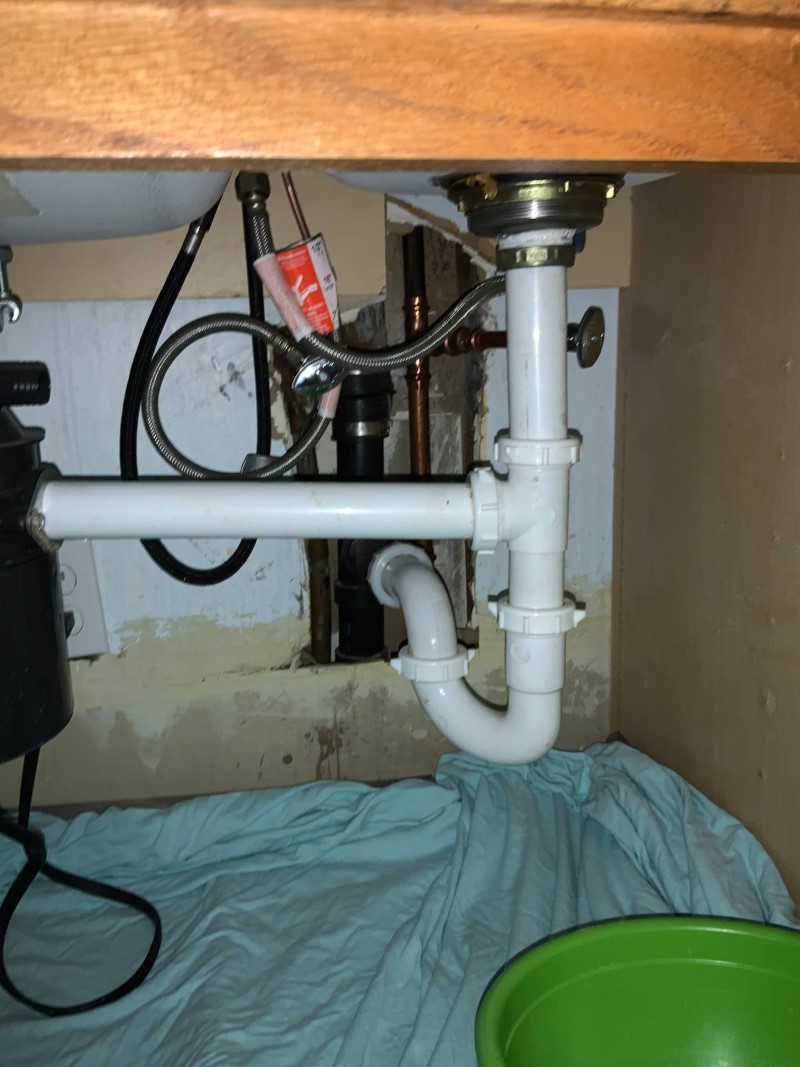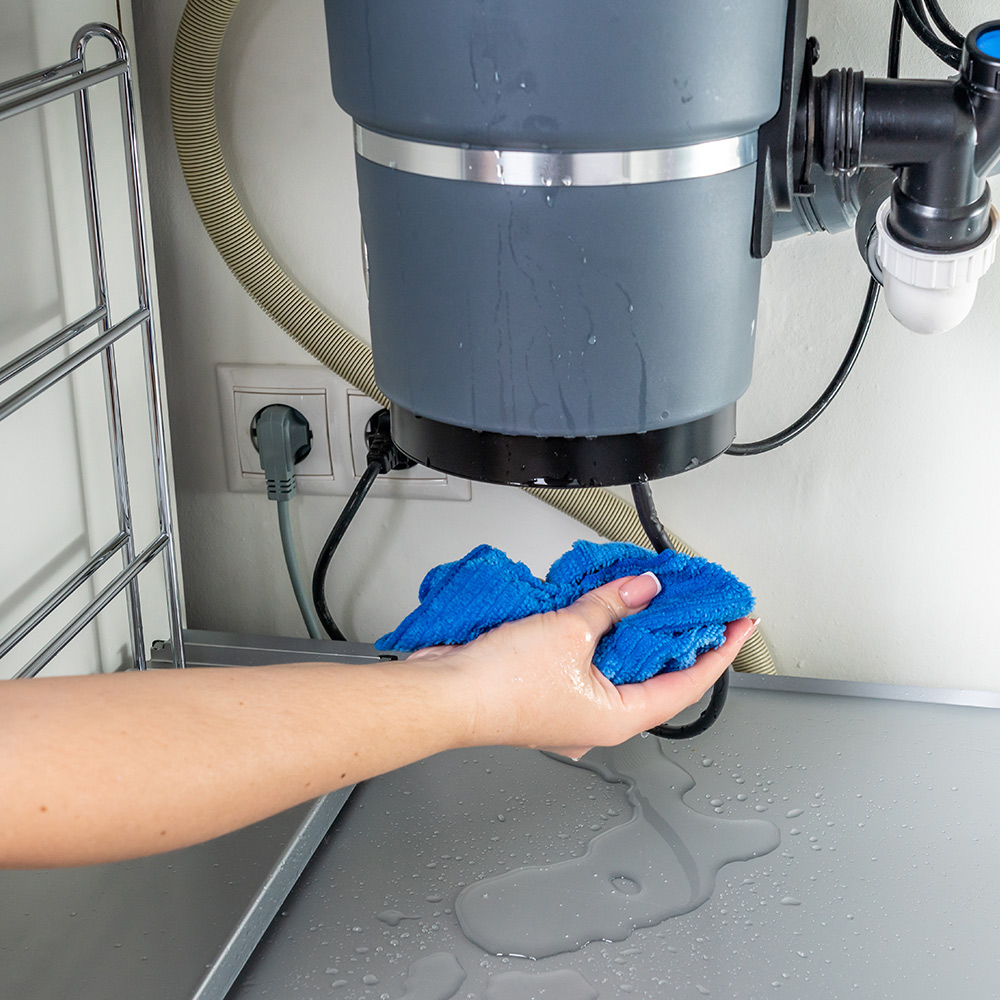Quick Fixes for a Dripping Garbage Disposal
Quick Fixes for a Dripping Garbage Disposal
Blog Article
Listed here in the next paragraph you will find more wonderful details pertaining to The Handy Guide To Fixing Your Garbage Disposal Leaking.

Garbage disposals are vital cooking area home appliances that aid in getting rid of food waste efficiently. Nonetheless, a dripping garbage disposal can be an aggravating and untidy issue to deal with. Thankfully, many leaks can be fixed quickly with a couple of easy steps. In this article, we will certainly discuss how to repair a dripping waste disposal unit efficiently.
Introduction
Garbage disposals are mounted under kitchen area sinks and are made to shred food waste right into smaller pieces, permitting it to travel through the pipes system quickly. While these devices are generally reliable, leaks can occur over time because of wear and tear, loose connections, or damages to the system.
Step-by-Step Guide to Fixing a Leaking Garbage Disposal
Switch off the Power
Prior to trying any kind of repair work, make certain that the power to the waste disposal unit device is shut off to avoid the danger of electric shock.
Find the Leakage
Recognize the precise area of the leakage and establish the cause
Tighten up Links
Make use of a wrench to tighten any type of loose links between the disposal device and the plumbing system.
Change Seals or Gaskets
If the leak results from worn seals or gaskets, get rid of the old elements and replace them with brand-new ones.
Patching Cracks or Holes
For fractures or openings in the disposal device, use epoxy or an appropriate patching product to seal the broken location.
Identifying the Resource of the Leak
Before attempting to take care of a leaking waste disposal unit, it is necessary to recognize the source of the leakage. This can generally be done through visual assessment or by performing straightforward examinations.
Visual Evaluation
Examine the garbage disposal unit thoroughly for any indicators of water leak. Pay very close attention to locations around seals, gaskets, and connection factors.
Checking for Leaks
One method to test for leaks is by running water via the disposal device and checking for any type of noticeable indicators of leakage.
Typical Sources Of Leaks in Rubbish Disposals
Worn Seals and Gaskets
Seals and gaskets play a vital duty in avoiding water from leaking out of the waste disposal unit. With time, these components can deteriorate, resulting in leakages around the disposal system.
Loose Connections
The connections between the garbage disposal and the plumbing system can come to be loosened over time, triggering water to leak out throughout operation.
Fractures or Holes in the Disposal System
Physical damage to the waste disposal unit, such as cracks or openings in the housing, can additionally cause leaks.
Devices and Materials Needed for Fixing a Dripping Garbage Disposal
Prior to starting the repair work procedure, collect the required tools and products, consisting of a screwdriver, flexible wrench, plumbing technician's putty, substitute seals or gaskets, and epoxy or patching product for fixing splits or holes.
Checking the Garbage Disposal After Repair Work
As soon as the fixing is complete, test the garbage disposal by running water with it to make certain that the leak has been resolved.
Preventive Upkeep Tips to Prevent Future Leaks
To prevent future leakages, it is essential to carry out regular upkeep on your waste disposal unit. This includes keeping it tidy, preventing putting non-food items or difficult objects down the disposal, and occasionally checking for leaks or other concerns.
Conclusion
In conclusion, fixing a dripping garbage disposal is a reasonably uncomplicated procedure that can be completed with basic tools and materials. By following the actions outlined in this short article and practicing preventive maintenance, you can maintain your waste disposal unit in good working problem and prevent costly repair work in the future.
What to Do About a Leaking Garbage Disposal
A leaking garbage disposal often goes unnoticed until you confront a sopping cabinet, a foul-smelling puddle, or an audible drip-drip-drip from the unit. The fix can be frustrating, too, because the leak can stem from a number of components in the system. Fortunately, with a little sleuthing, you can zero in on the leak and—depending on the exact location—stop the icky oozing and repair the component that caused it. Worst case scenario, if it turns out that the garbage disposal must be replaced, installing a new one is a reasonable do-it-yourself task for those with basic plumbing skills. Read on to keep the cash you’d otherwise hand over to a pro.
Prepare to find the leak
Prior to testing the garbage disposal for leaks, unplug it at the wall outlet and turn off the power from the breaker box to prevent electrical shock. Then insert a watertight sink stopper into your sink drain and wipe the unit dry with a clean cloth. In any handy container, mix a few drops of food coloring into a few cups of water, and pour the dyed water onto the sink stopper to help you locate the leak.
Investigate the source
the top, where the disposal meets the sink drain the side, where the dishwasher hose or main drain pipe connects to the disposal or the bottom of the unit Inspect each of these locations while gliding a light-colored rag over the unit; the dyed water will readily show on the rag and reveal the location of the leak. If a leak isn’t immediately apparent, remove the sink stopper and pour a few more cups of dyed water down the sink drain, then check for leaks again. Leaks near the top of the unit are more likely to show themselves while the sink is plugged, while side and bottom leaks are more noticeable while the sink is unplugged.
The metal sink flange that sits directly inside the sink drain is typically sealed around the top with plumber’s putty (a clay-like sealant) and then secured from under the sink with bolts. If the plumber’s putty deteriorates, or the bolts loosen, the flange can no longer form a watertight seal between the sink drain and the disposal—which could cause a leak at the top of the unit.
To reseal the leaky flange, you must first detach the garbage disposal. Start by loosening the screws securing the main drain pipe to the disposal, then loosen the screws in the metal clamp securing the dishwasher hose to the disposal and detach the drain pipe and dishwasher hose from the disposal. Loosen the screws in the mounting ring that connects the disposal to the metal mounting assembly beneath the sink, then pull down the disposal and carefully set it on a clean, dry surface. Loosen the bolts in the mounting assembly with a wrench, then pull down the mounting assembly and set it near the disposal.

Do you appreciate more info about Why Is My Garbage Disposal Leaking From the Bottom?? Make feedback down the page. We would be delighted to hear your views about this content. We are looking forward that you come back again soon. Enjoyed our blog entry? Please share it. Help somebody else check it out. Thank you for your time spent reading it.
Book An Estimate Now Report this page